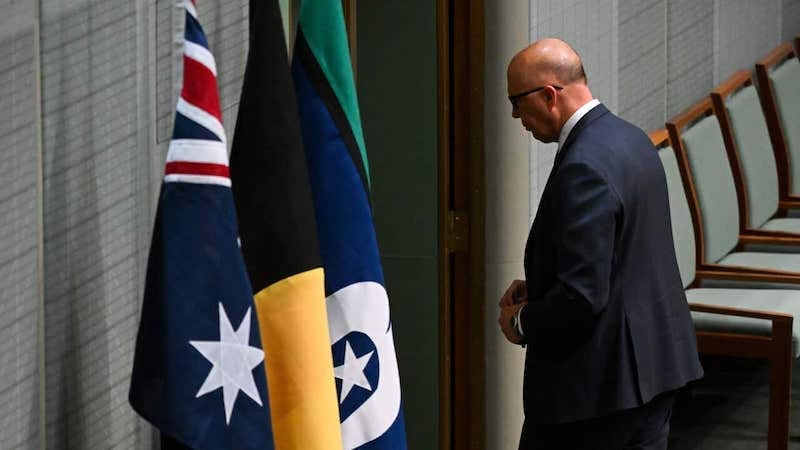Why does Australia keep failing to Close the Gap?
The dream is that one day, the public will see Indigenous wellbeing not as a niche cause or a tokenistic gesture, but as a matter of national responsibility and collective benefit.
The Closing the Gap report continues to expose the disadvantages faced by Aboriginal and Torres Strait Islander peoples, yet it hasn’t generated the urgent, comprehensive action that’s required to address them. Since the first report was tabled in 2008, governments of all persuasions have presented variations of pretty much the same report year after year, but have failed to deliver even the minimal shifts required to make substantial changes.
In this latest report, of the 19 socio-economic targets identified for improvement by 2031, only five are on track. Five. There is progress in ensuring more Indigenous children access early childhood education, in boosting healthy weight outcomes for newborns, and in transferring legal control of more land and sea country back to Aboriginal and Torres Strait Islander custodians – these are significant benchmarks, and they highlight that positive change is possible where strategic commitments receive focused investment and community-led engagement.
Yet these improvements are counteracted by worsening outcomes in other critical areas. The life expectancy gap remains stubbornly high, incarceration rates for Indigenous Australians are climbing, and suicide rates are not only failing to decrease but are in fact escalating. More broadly, the various forms of disadvantage within education, housing, health, and employment continue to reflect deep inequities that have evolved after centuries of dispossession and discrimination.
Each time this report surfaces, it highlights how structural factors continue to entrench poverty, lack of opportunity, and social marginalisation. Meanwhile, the frustrations grow louder for Indigenous people: too many policymakers appear happy with small, piecemeal efforts that do not alter the foundations of inequality. When resistance to increased funding or support appears – often from the right-wing voices that question why Indigenous communities deserve “special” treatment – the bigger historical and social picture is ignored, as if centuries of exclusion can be overturned by the barest minimum of resources.
What the data reveals is that these gaps persists not just because of any single misstep by a government agency or the personal choices of individuals, but because of a wide-scale failure to address the root causes. It is simplistic to assume that higher rates of incarceration are just a reflection of more crime, without considering how intergenerational trauma, continued marginalisation, and cultural alienation drive certain actions in the first place.
It’s equally narrow-minded to say that increased funding has been misspent or wasted, without looking at why communities might be forced to operate under resource stress and constant policy churn. Year after year, such simplistic narratives derail meaningful debates, shifting blame around rather than seeking more meaningful and longer-term solutions. Meanwhile, the gap remains wide, a national shame that intensifies every year these statistics are released. Rather than accept another repetitive cycle in which largely the same report is presented with little tangible progress, a complete transformation in approach is needed – one that goes beyond small and cosmetic changes, and instead looks into the structural realities that keep Indigenous peoples at a disadvantage.
The top-down approach keeps failing
Despite decades of evidence that a strictly top-down approach has produced disappointing outcomes, governments continue to dictate the terms of Indigenous affairs rather than meaningfully partner with communities. Large funding announcements are made – like the $842 million earmarked for the Northern Territory over the next six years – but they often come without the level of grassroots involvement needed to ensure that money targets the real, on-the-ground priorities.
The ambition of the federal government to lock in city prices for essential goods in remote locations seems promising on the surface, yet the policy design remains predominantly directed by bureaucrats and political leaders who may never have stepped foot into these communities or engaged deeply with local perspectives. Similarly, educational and nutritional initiatives, along with early interventions for domestic violence, appear on government agendas repeatedly, but they are rarely coupled with sustained, community-driven planning and follow-up. Consequently, any temporary gains risk collapsing once the initial funding period ends, when political attention drifts elsewhere, or if there’s a change of government which, essentially, is a possibility at every federal election, including the one to be held before May 2025.
What frustrates many Indigenous advocates is the predictable cycle in which governments promise solutions, impose them, and then wonder why they fail to deliver real change. Initiatives that claim to promote economic development or employment opportunities tend to be designed with minimal input from those who will experience them firsthand.
As a result, the root causes of entrenched disadvantage – such as generational trauma, land dispossession, and the erosion of cultural identity – are left untouched. Another consequence of this misguided approach is the empowerment of voices that sow division. When there is little clarity about how and why investments are made, or when community consultation is superficial, critics step in and question the very rationale for supporting Indigenous programs at all. People who harbour prejudices or self-interest – the ones who were so prominent during the Voice to Parliament campaign in 2023 – find it easy to fill the vacuum with misleading claims about wasted funds or preferential treatment. Their message then gains traction in the absence of decisive, transparent strategies that could have been formulated from the ground up.
Rather than focusing on the structural issues that continue to replicate disadvantage, the spotlight always falls on whether funding is justified or whether diverse communities truly needed additional support. The result is a deepening gulf that becomes more apparent, ensuring that the top-down script – where government agencies usually devise solutions in isolation – remains unchallenged. If this pattern is not broken, the likelihood is high that in another five or six years, a new set of Closing the Gap statistics will emerge with the same results, and the cycle of well-meaning but ultimately ineffective policies will just keep roll on.
The political reality: Indigenous issues are a low priority
This latest Closing the Gap report, the second report to come in after the failure of the 2023 Voice to Parliament referendum, confirms an obvious political truth: there are few electoral rewards in pushing forward with Indigenous issues, and that reality dampens the likelihood of any bold policy changes.
While a successful referendum in 2023 would have not have solved the perennial problems outlined in the latest report in an instant, the Voice was at least intended to lay foundational structures and bolster long-term efforts in reconciliation. Instead, its defeat served as a clear signal that politicians can rally more votes by opposing Indigenous measures than by advocating for them, and it has emboldened those who view any expression of Indigenous recognition – be it dual place names or acknowledgment of Country – as unnecessary or even offensive.
There are flow-on effects from this: some sporting bodies such as the National Rugby League, once keen to display cultural inclusivity, have stepped back from practices such as Welcome to Country ceremonies to commence a game; politicians such as leader of the opposition, Peter Dutton, have gleefully refused to stand in front of Indigenous flags during media conferences; and public criticism of everyday gestures of respect has become more pronounced.
As these symbolic gestures are gradually removed, the deeper structural challenges remain unaddressed. Critics argue that Welcome to Country ceremonies don’t address any of these structural challenges, so they should be removed, yet have failed to put forward the evidence that removing them actually would improve these challenges. How many suicides have been prevented by Dutton’s refusal to stand before an Indigenous flag?
The Country Liberal government in the Northern Territory has cancelled its Treaty process, and the new LNP government in Queensland has followed suit, and this is a part of a broader conservative retreat from meaningful actions to recognise Indigenous people. The political calculation has been made – as well an ideological commitment – that there is little benefit in promoting these initiatives, especially when vocal conservative segments of the electorate, resentful of being reminded of contested histories that might somehow disadvantage them, actively push back against acknowledgments of dispossession and calls for justice.
None of this is surprising, especially in a nation that has long been uneasy with confronting the implications of the Mabo decision from 1992 and the idea of living on stolen land. This entrenched discomfort reflects a refusal to deal with historic truths and their modern-day consequences. Yet the aftermath of the Voice referendum and the accompanying backlash to Indigenous recognition are not solely about stagnation; they also represent a culture war flashpoint where opposing progress is framed as defending tradition.
Those who question or critique entrenched racism usually ignite a defensive response, the I’m not racist, but response that denies the underlying prejudice. At the same time, societal standards of what is deemed overtly racist have, over several generations, evolved to be more critical of harmful language and attitudes. This slow but perceptible shift, though positive in some respects, remains woefully insufficient in addressing the multilayered disadvantage captured by the Closing the Gap figures.
It’s this disconnect – where greater public sensitivity to explicit racism coexists with a reluctance to reform entire systems – that the persistent inequities endure. Despite repeated evidence of widespread suffering and missed opportunities for Indigenous communities, the release of the latest Closing the Gap report barely registered in political headlines.
The Prime Minister Anthony Albanese delivered the Closing the Gap report during the week, almost as a perfunctory duty, and then quickly moved to other matters: again, emphasising the perception that there’s no substantial electoral reward in advocating for Indigenous affairs, as Albanese discovered during the Voice to Parliament referendum. Beyond the corridors of power, however, there remains a hope that this annual reminder of widening gaps will eventually prompt more people to press for action.
The dream is that one day, enough policymakers and members of the public will begin to see Indigenous wellbeing not as a niche cause or a tokenistic gesture, but as a matter of national responsibility, moral necessity, and, ultimately, collective benefit. Until then, the cycle of disappointing statistics and half-hearted proposals continues, overshadowed by the reality that, for now, political capital still lies elsewhere, especially in the lead up to a federal election campaign.












It costs money and Gina needs a tax cut
A very accurate assessment. It’s bloody tragic. Our indigenous population and their history should be celebrated, not treated like a political football. Goodness help us if Dutton is elected. Nothing worse than fake Christians.